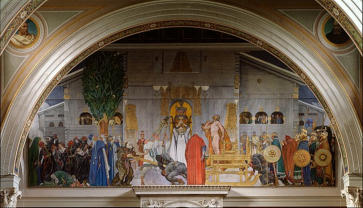
Copyright © Hans Högman 2019-12-24


Jul - Christmas (Yule)
Pre-Christian Yule and the Christian
Christmas
Christmas is called “Jul” in Swedish and “Jul” is
pronounced about the same way as English people
would pronounce the word “Yule”.
The “Jul” (Yule) in Sweden was originally a pagan
tradition that was taken over by Christianity. The
Christian Christmas (“Jul”) is an annual festival
commemorating the birth of Jesus Christ observed
primarily on December 25. Some regions such as
Scandinavia celebrate primarily on December 24,
rather than December 25.
In addition to "Christmas", the holiday has been
known by various other names throughout its
history. In Old English, Gēola (Yule) referred to the
period corresponding to December and January,
which was eventually equated with Christian
Christmas.
Before Sweden’s Christianize, Julblot (Mid-Winter
Festival) was celebrated at this time of the year.
Blot means sacrificial feast and Julblot a sacrificial
feast at yuletide.
The pre-Christian “Jul” falls in mid-January and when
Sweden was converting to Christianity, Christian
traditions took over. However, some of the old
pagan traditions survived, however, now in a
Christian form within Christmas.
To many Swedes “Jul” (Christmas) nowadays is a
cultural tradition
rather than a
religious feast.
The image to the
right shows
Midvinterblot (Mid-
Winter Festival), a
painting by Carl
Larsson (1853-1919), Nationalmuseum. Free image
Wikipedia.
The pre-Christian “Jul” (Yule) was a pagan feast.
The word Jul (Yule) is attested in an explicitly pre-
Christian context primarily in Old Norse.
In Old Norse poetry, the word is often employed as
a synonym for 'feast'. The earliest references to it
are in the form of month names, where the Yule-
tide period lasts somewhere around two months in
length, falling along the end of the modern
calendar year between what is now mid-November
and early January.
In the pre-Christian Jul festivals, banquets where
held were those present drank beer and made
“blot”, i.e. made sacrifices to the Old Norse gods.
Hence, the expression; "to drink jul/yule".
The Julblot or Midvinterblot festival was originally
held in mid-winter but in the 10th century, it was
moved to the same date as the Christian Christmas.
The Blot rites were forbidden and abandoned when
Sweden became a Christian country.
The Icelandic sagas mention three annual Blot
feasts; Höstblot (Fall Feast), Midvinterblot (Mid-
winter Feast), and Vårblot (Spring Feast).
Departing from its pagan roots, Jul (Yule)
underwent Christianized reformulation, resulting in
the term Christmastide (“Juletid”). Many present-
day Christmas customs and traditions such as the
Yule log (“Julbrasa”), Yule goat (“Julbock”), Yule boar
(“Julgris”), Yule singing (“Julsånger”), and others
stem from pagan Yule traditions.
When Christianized, the Nordic countries kept the
word "Jul" for the new Christian feast.
Terms with an etymological equivalent to “Jul” (Yule)
are still used in Sweden and the other Scandinavian
countries to describe Christmas and other festivals
occurring during the
winter holiday season.
The image to the right
shows Jesu födelse
(Nativity of Jesus Christ), a
painting by the Dutch
artist Gerrit van
Honthorst (1590/1592 –
1596). Free image
Wikipedia.
Sweden and the other Scandinavian countries
celebrate Christmas (Jul) primarily on December
24, rather than December 25. The main celebration
and the exchange of gifts in many families take
place on Christmas Eve, December 24.
However, the entire period from Advent Sunday
and forward marks days of Christmas preparation.
In Swedish traditions, Christmas isn’t over until
Tjugondag Knut, 13 January (St. Knut's Day).
Christmas trees are taken down on Tjugondag Knut,
and the candies and cookies that decorated the
tree are eaten. In Sweden, the feast held during this
event is called a Knut's party (Julgransplundring,
literally "Christmas tree plundering"). St. Knut's Day
marks the end of the Christmas and holiday
season. It is celebrated by taking out the Christmas
tree and dancing around it. Nowadays, the feast is
mainly for children.
Julgran - Christmas Tree
The story of the Christmas tree begins in Germany
in the 16th century. During the 17th and 18th
centuries, the Christmas tree started being dressed
with candles.
A Christmas tree is a decorated tree, usually an
evergreen conifer, such as spruce, pine or fir, or an
artificial tree of similar appearance, associated with
the celebration of Christmas, originating in
Northern Europe. In the 18th century, it began to
be illuminated by candles, which were ultimately
replaced by Christmas lights after the advent of
electrification.
The Christmas tree in Sweden (Julgran) is a custom
that was imported from Germany in the 1880s. The
first Swedish Christmas trees were generally
decorated with live candles and treats such as fruit
and candy. Apples were often hung on the
branches where the candles were located to make
them more parallel to the ground. It soon became
more common for families to make their own
decorations with paper and straw. Some families
preferred to build a Ljuskrona (Chandelier)
decorated with cut paper. From around 1880,
commercial Christmas tree decorations were
readily available in larger Swedish cities, the finest
were imported from Germany. The day that people
in Sweden buy and dress their
Christmas tree varies greatly
from family to family, but many
have them dressed on 13
December and throw them out by
13 January.
The image to the right shows a
decorated Christmas tree
(Julgran). Free image Wikipedia.
There was an early custom in
Sweden, probably pre-Christian, to make decorated
Julstänger (plural) placed outdoor at
Christmastide. This is probably why the custom of
keeping a decorated Christmas tree indoors quickly
became very popular in Sweden.
A julstång is a limbed (and usually with its bark
stripped off) small spruce which was erected
outdoors in the yard with the top branches kept
with or without Christmas decorations. Julstång
literally means “Christmas
pole”.
The image to the right
shows a “julstång”
decorated with a cross of
spruce twigs. Image;
Uppland Museum, City of
Uppsala, 1959.
Digitaltmuseum.
The custom of having decorated Christmas trees in
Sweden began among the nobility in the 1740s. Not
until about a hundred years later, in the mid-1800s,
the custom spread to country people. In the
beginning, the Christmas trees in farmhouses were
small trees, often placed on a table or hung from
the ceiling.
The large Christmas trees of today began in the
middle of the 1800s in homes of the middle-class in
their city apartments where the ceiling height was
much higher than in the old country farmhouses.
Julklappar - Christmas Presents
A Christmas present (Julklapp) is a gift given in
celebration of Christmas. Christmas gifts are often
exchanged on Christmas Day in the English
speaking countries but on Christmas Eve in the
Scandinavian countries.
The tradition of gift-giving in general is an old one,
but it became associated with Christian feast of
Christmas more recently.
The Swedish tradition of gifts at Christmas is a very
old tradition among the country people. It was a
rural tradition among young men to go from house
to house knocking heavily on the front door and
throwing in a piece of wood or straw doll or some
other funny gift.
To knock on the door is called “klappa” in Swedish
and the Swedish word for Christmas present,
Julklapp, literally means “Christmas knock on the
door” associated with a gift.
Usually the “gifts” had an attached slip of paper
with a mean or sarcastic verse. These verses were
predecessors to present days rhymed inscriptions
written on Christmas presents.
It was important for the young men not to be
caught in the act since the verses usually were
wicked.
So, the custom of exchanging Christmas gifts in
Sweden began as a joke.
Christmas presents as we see them today began in
Sweden at the end of the 1700s. The Christmas
presents were then delivered by someone dressed
as a Christmas Goat or Yule Goat (Julbock).
The tradition with Christmas presents delivered by
the Julbock was at the end of the 1800s taken over
by Jultomten (Santa Claus).
At this time, presents were usually homemade. Not
until the 1940s, after WWII, could common people
afford to buy Christmas presents.
The image to the right
shows a Julbock delivering
Christmas presents at
Bollnässtugan, Skansen,
1910s. The
image to the
left shows a
straw
Christmas Goat in Gamla stan,
Stockholm.
Free images Wikipedia.
In the Nordic countries, and in
Germany, Poland and Austria the exchange of gifts
take place on Christmas Eve, while in many other
countries on Christmas Day. The Christmas
presents can be delivered by a Santa or be placed
under the Christmas tree before opened.
Jultomte - Santa Claus
Santa Claus, also known as Father Christmas, is a
legendary figure originating in Western Christian
culture who is said to bring gifts to the homes of
well-behaved children on the night of Christmas
Eve (24 December) or during the early morning
hours of Christmas Day (25 December).
The modern Santa Claus grew out of traditions
surrounding the historical Saint Nicholas (a fourth-
century Greek bishop and gift-giver of Myra).
The Swedish tomte or tomtenisse is a mythological
creature from Nordic folklore.
It is generally described as being no taller than 90
cm (3 ft), having a long white beard, and wearing a
conical or knit cap in red or some other bright
color. They often have an appearance somewhat
similar to that of a garden gnome.
The tomte is one of the most familiar creatures of
Scandinavian folklore, and he has appeared in
many works of Scandinavian literature. In the
English editions of the fairy tales of Hans Christian
Andersen the word tomte has been translated as
goblin.
The word tomte is derived from the term for a
place of residence and area of influence: the house
lot, tomt.
According to tradition, the tomte lives in the houses
and barns of the farmstead and secretly acts as
their guardian. If treated well, they protect the
family and animals from evil and misfortune, and
may also aid the chores and farm work. However,
they are known to be short-tempered, especially
when offended. Once insulted,
they will usually play tricks, steal
items and even maim or kill
livestock.
The image to the right shows
“Tomten in Tirup feeding the horse”,
a woodcut by Andreas Flinch
(1842) after a model by Dane
Johan Thomas Lundbye. Free image Wikipedia.
Despite his small size, the tomte possessed an
immense strength. He was easily offended by
careless lack of proper respect and lazy farmers. As
the protector of the farm and caretaker of livestock,
his retributions for bad practices ranged from small
pranks like a hard strike to the ear to more severe
punishment like killing off the livestock or ruining of
the farm's fortune.
Observance of traditions was thought important to
the tomte as he did not like changes in the way
things were done at the farm. He was also easily
offended by rudeness: farm workers swearing,
urinating in the barns, or not treating the creatures
well would do so under the threat of a sound
thrashing by the tomte. If anyone spilled something
on the floor in the house, it was considered proper
to shout a warning to the tomte below.
One was also required to please the spirit with gifts
(see Blot above) – a particular gift was a bowl of rice
pudding (Tomtegröt) on Christmas Eve. If the tomte
was not given his payment, he would leave the
farm or house, or engage in mischief such as tying
the cows' tails together in the barn, turning objects
upside-down, and breaking things (like a troll). The
tomte liked his pudding with a pat of butter on the
top.
The tomte shares many aspects with other
Scandinavian wights such as the Swedish vättar.
The Swedish word tomte is short for tomtenisse
or tomtegubbe. Tomten, tomtegubben or
gårdstomten (farmstead tomte) are different terms
for the farmstead guardian in the Nordic folklore.
In Scandinavia, it was Swedish author Viktor
Rydberg with his novel Lille Viggs äventyr på julafton
“Little Vigg’s adventures on Christmas Eve” (1871)
and the poem Tomten “The Tomte" (1881) and Jenny
Nyström who illustrated both works, that founded
the cultural merger between the old tomte and the
modern jultomte (Santa Claus). At that time the
Swedish jultomte was a little gray old man with a
red woolen hat and a long
beard.
These
images
show
examples
of the
“tomte” as Jenny
Nyström (1854-
1946) portrayed
them. To the top
right a “tomte”
with Christmas
rice pudding. Free images,
Wikipedia.
The tradition of tomte is, in other
words, also associated with Christmas through the
Jultomte. The tomte is accompanied by another
mythological creature: the Yule goat (The Julbock -
see above).
The pair appear on Christmas Eve, knocking on the
doors of people's homes, handing out presents.
By the time there was a gradual fusion between the
above, described tomte and the modern jultomte
influenced by the American Santa Claus – a portly,
jolly, white-bearded man wearing a red coat with
white fur collar and cuffs and, a red hat with white
fur. This image became popular in the 19th century
due to the significant influence
of the 1823 poem "A Visit from
St. Nicholas" and of caricaturist
and political cartoonist Thomas
Nast.
The image to the left shows a
typical American Santa Claus.
Santa Claus portrayed by
children's television producer
Jonathan Meath, 2010. Free
image Wikipedia.
The first time the word jultomte was used in
Sweden was in 1864, as the title of a Christmas
magazine.
The Swedish Jultomte is thus a blend of the
American Santa Claus and the old farmstead tomte
in Swedish folklore and was imported as a tradition
from the USA in the 19th century. In Sweden and
the other Nordic countries, Christmas is celebrated
with Christmas presents in the afternoon or early
evening on Christmas Eve, December 24.
Also in countries such as Poland, Portugal, parts of
Switzerland, Germany and Austria, Christmas Eve is
the most important day at Christmas. Christmas
Eve is the day when people in these countries have
their Christmas dishes and exchange Christmas
presents.
In the English spoken world, Christmas is
celebrated on Christmas Day. In these countries,
Santa Claus or Father Christmas is handing out
Christmas presents during Christmas Night so the
children can have them on the morning of
Christmas Day, December 25.
After Christmas Eve there are two public holidays:
Juldagen (Christmas Day) and Annandag jul (Boxing
Day).
Advent
The term Advent is derived from Latin adventus
(Domini) which means "coming; arrival" (of the
Lord). Advent is the beginning of the liturgical year
of Western Christian practice. Advent is a time of
expectant waiting and preparation for the
celebration of the Nativity of Jesus at Christmas.
Associated with Advent was a period of fasting,
known also as the Nativity Fast or the Fast of
December, starting with the feast of St. Martin, 11
November, until Christmas with 40 days of fasting
like the fast of Lent.
This period of fasting was later shortened and
called "Advent" by the Church.
Advent begins on the 4th Sunday before Christmas
and lasts until Christmas Eve. The four Sundays
before Christmas are called First Advent Sunday
(Första Advent), Second Advent Sunday, etc.
In Sweden, white candles, a symbol of festivity and
purity, are used in celebrating Saint Lucy's Day, 13
December, which always falls within Advent.
In the northern hemisphere, this is the darkest
period of the year and in Sweden, people light
candles in the homes, both live candles and electric
candlesticks; for example Adventsljusstake (The
Advent Four-branched Candlestick) and
Adventsstjärna (The Advent Star Lantern).
Adventsljusstake - Four-branched
Candlestick used at Advent
An adventsljusstake or simply adventsstake is a
candlestick with four candles used in Advent. The
first candle is lit on Advent Sunday (First Sunday of
Advent), and the first candle to be lit is the candle
on the extreme left or right. On Second Sunday of
Advent, both the first as well as the second candle
are lit, i.e. two candles next to each other are
burning. On Third Sunday of Advent yet another
candle is lit and the final candle is lit on Fourth
Sunday of Advent. Since the
duration of the candles burning is
different the four candles finally
form a flight of stairs.
The image to the right shows an
adventsstake with three burning
candles (Third
Sunday of Advent) forming a
flight of stairs. Free image
Wikipedia.
The image to the left shows an
electric Advent candlestick with
seven electric candles. Photo:
Hans Högman, 2019.
The custom of adventsljusstake
with lit candles each Advent
Sunday was imported to Sweden at the end of the
1800s. In the northern hemisphere, this is the
darkest period of the year and the candlesticks are
“lights in the darkness” and very popular. Many
Christmas carols are about candles being lit in
Advent.
The word adventsljusstake is also used for electric
Advent candlesticks. The electric Advent
candlesticks are usually seven-branched in a
pyramidal shape. People have many electric Advent
candlesticks in their homes at Advent and they are
usually placed on the window ledges (see image).
The Advent candlesticks with live candles are
usually placed on tables.
Adventsstjärna - Advent Star Lantern
An Adventsstjärna (Advent Star Lantern) or Julstjärna
(Christmas Star Lantern) is a star-shaped Christmas
decoration with electric lightning, hung by the
window on First Sunday of Advent. It symbolizes
the Star of Bethlehem or Christmas Star. The
custom of Advent Star
Lantern comes from
Germany and is very popular
in Sweden.
The image to the right shows
an adventsstjärna. Free image
Wikipedia.
The tradition dates back to the beginning of the
1800s. The first known Advent Star Lantern used in
Sweden is the one used in Västerås Cathedral in
1894. The actual word adventsstjärna was used for
the first time in Sweden in 1923 and a few years
later the tradition became very popular also in
private homes.












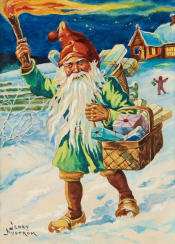

Christmas in Sweden
Lucia - Saint Lucy’s Day
Lucia or Saint Lucy’s Day in English is a Christian
feast day observed on 13 December,
commemorating Lucia of Syracuse, an early-4th-
century martyr. Her feast day, which coincided with
the shortest day of the year prior to calendar
reforms, is widely celebrated as a festival of light.
Falling within the Advent season, Saint Lucy's Day is
viewed as a precursor of Christmastide, pointing to
the arrival of the Light of Christ.
Lucia (Saint Lucy's Day) is celebrated most widely in
Sweden and in Italy, with each emphasizing a
different aspect of her story.
In Sweden, where she is called Sankta Lucia in
Swedish, she is represented as a lady in a white dress
symbolizing a baptismal robe and a red sash
symbolizing the blood of her martyrdom, with a
crown or wreath of candles on her head, songs are
sung, girls dressed as Saint Lucy carry cookies and
saffron buns in procession, which symbolizes
bringing the Light of Christ into the world's darkness.
Boys participate in the procession as well, playing
different roles associated with Christmastide, such as
that of Saint Stephen.
Lussinatten, the Lussi Night, was marked in Sweden
on 13 December. Then Lussi, a female being with evil
traits, like a female demon or witch, was said to ride
through the air with her followers, called Lussiferda.
This itself might be an echo of the myth of the Wild
Hunt, called Oskoreia in Scandinavia. Between Lussi
Night and Yule, trolls and evil spirits, in some
accounts also the spirits of the dead, were thought to
be active outside. It was believed to be particularly
dangerous to be out during Lussi Night.
According to tradition, children who had done
mischief had to take special care, since Lussi could
come down through the chimney and take them
away, and certain tasks of work in the preparation
for Yule had to be finished, or else the Lussi would
come to punish the household. The tradition of
Lussevaka – to stay awake through the Lussinatt to
guard oneself and the household against evil, has
found a modern form through throwing parties until
daybreak.
The Swedish Lucia is a blend of both pre-Christian
traditions and Christian traditions and these
traditions have also spread to the other Nordic
countries. The name Lucia is derived from Latin lux,
which means light.
In Sweden, Lucia is venerated on 13 December in a
ceremony where a girl is elected to portray Lucia.
Wearing a white gown with a red sash and a crown of
candles on her head, she walks at the head of a
procession of women, each holding a candle. The
candles symbolize the fire that refused to take St.
Lucy's life when she was sentenced to be burned.
The Swedish lyrics to the
Neapolitan song Santa Lucia
have traditionally been
either “Natten går tunga fjät”
(The Night steps heavily) or
“Sankta Lucia, ljusklara
hägring” (Saint Lucy, bright
mirage).
The image to the right
shows Lucia celebrations in
Vaxholm church in 2017.
The image to the left
shows Lucia celebrations
in 2006.
Free images Wikipedia.
Although Lucia Day is not
an official holiday in
Sweden, it is a popular
occasion in Sweden. At
many universities,
students hold big formal dinner parties since this is
the last chance to celebrate together before most
students go home to their families for Christmas.
The modern tradition of having public processions in
the Swedish cities started in 1927 when the
newspaper Stockholms Dagblad elected an official
Lucia for Stockholm that year. The initiative was then
followed around the country through the local press.
Today most cities in Sweden appoint a Lucia every
year. Schools elect a Lucia and her maids among the
students. The regional Lucies will visit shopping
malls, old people's homes and churches, singing and
handing out ginger-nut cookies (pepparkakor).
A special baked bun, Lussekatt (St. Lucy Bun), made
with saffron and in use as
early as November, is a very
popular Christmas tradition.
The image to the right shows
Lussebullar / Lussekatter
(Lucia buns).
The image to
the left shows ginger-nut cookies.
Free images Wikipedia.
The Feast of Lucia has during the
20th century spread to the Swedish
speaking areas of Finland, Denmark (1944) and to
some extent Norway. In the 1920s the feast also
spread to the USA through Swedish immigrants and
their Swedish Clubs in the US.
Julbord - Swedish Christmas Buffet
(Smorgasbord)
Christmas dinner is a meal traditionally eaten at
Christmas. This meal can take place any time from
the evening of Christmas Eve to the evening of
Christmas Day itself. The meals are often particularly
rich and substantial, in the tradition of the Christian
feast day celebration, and form a significant part of
gatherings held to celebrate the arrival of
Christmastide.
The actual meal consumed varies in different parts of
the world with regional cuisines and local traditions.
In Poland and parts of Germany, the Christmas
dinner is carp, in the US and UK turkey is the main
dish and in Sweden the “Julbord”, (Christmas table),
a Christmas buffet with many different dishes.
It is also very common that julbord is organized by
employers or organizations and others for the
employees or members. There is often lively partying
and the party can be an important social meeting
place for colleagues.
Julbord buffets are a popular tradition that creates
high season for the restaurant industry in December.
The julbord buffet is characterized by large amounts
of food and drink, both traditional and new, hot and
cold dishes.
Traditional foods include a julbord which has been
prepared with all the classic dishes:
Christmas ham (julskinka), sausage (prinskorv),
hard-boiled egg-halves decorated with bleak roe
(löjrom), pickled herring salad (sillsallad), beetroot
salad (rödbetssallad), pickled herring in many
variates (inlagd sill), marinated salmon (gravlax),
smoked salmon (rökt lax), sour cream (gräddfil),
wort-flavored rye bread (vörtbröd), potatoes,
Jansson’s temptation (Janssons frestelse), ribs,
meatballs, rice pudding, cheese, and a special fish
dish, lutfisk.
The seasonal black soft drink julmust is also served at
the julbord, as well as during the whole Christmas
holiday.
The image to the
right shows an
example of a
julbord. Free
image Wikipedia.
A traditional
julbord is typically eaten in three courses. The dishes
include local and family specialties.
The first course would typically be a variety of fish,
particularly pickled herring and lax (gravlax). It is
customary to eat particular foods together; herring is
typically eaten with boiled potatoes and hard-boiled
eggs and is frequently accompanied by strong spirits
like snaps; brännvin or akvavit with or without
spices and beer.
The second course is often a selection of cold sliced
meats, the most important cold cut being the
Christmas ham (julskinka) with mustard. Other
traditional cuts include homemade sausages, liver
paté (leverpastej) and several types of brawn (sylta).
It is also common to serve the cold meats with sliced
cheese, pickled cucumbers and, soft and crisp
breads.
The third course would be warm dishes. Traditionally,
the third course begins with soaking bread in the
stock from the Christmas ham, which is called “dopp i
grytan”. Warm dishes include Swedish meatballs
(köttbullar), small fried hot dog sausages (prinskorv),
roasted pork ribs (revbensspjäll), and warm potato
casserole, matchstick potatoes layered with cream,
onion and sprats called Janssons frestelse (literally
"Jansson's Temptation").
Lutfisk, lye fish made of stockfish (dried ling or cod)
served with boiled potato, thick white sauce and
green peas can be served with the warm dishes or as
a separate fourth course. Lutfisk is often served as
dinner the second day after the traditional Christmas
Yule-table dinner. Julbord desserts include rice
pudding (risgrynsgröt), sprinkled with cinnamon
powder.
The ham is either boiled or broiled and then painted
and glazed with a mixture of egg, breadcrumbs and
mustard. Seasonal Beer (Julöl) and the occasional
snaps are common beverages to this Christmas
meal. Mulled wine called glögg, ginger nuts and
saffron buns is served throughout December. Snaps
are drunk as shots in special small glasses called
snapsglas.
Snaps
Snaps is a Danish and Swedish word for a small shot
of a strong alcoholic beverage taken during the
course of a meal. A ritual that is associated with
drinking snaps is a tradition in Scandinavia,
especially in Denmark and Sweden, where it is very
common to drink snaps at holidays such as
Midsummer, Christmas, and Easter.
In Denmark, a snaps will always be akvavit, although
there are many varieties of it. In Sweden, snaps is a
more general term; it is usually akvavit, although it
may also be vodka or some other kind of brännvin.
Swedes, Danes and Swedish-speaking Finns have a
tradition of singing songs (called snapsvisor) before
drinking snaps. These snapsvisor are typically odes
to the joys of drinking snaps. They may praise the
flavor of snaps or express a craving for it.
Akvavit or aquavit is a distilled spirit that is principally
produced in Scandinavia, where it has been
produced since the 15th century. Akvavit is distilled
from grain and potatoes and is flavored with a
variety of herbs for example caraway, cumin, anise,
fennel, and/or dill seed. Akvavit usually has a
yellowish hue, but this can vary from clear to light
brown depending on how long it has been aged.
Clear akvavit is called taffel, meaning table aquavit.
Taffel aquavit is typically aged in old casks that do
not color the finished spirit or it is not aged at all.
Akvavit is cooled and sipped from a small shot
glass. In Sweden commonly the aquavit is consumed
immediately following a song, called a
snapsvisa. Drinking it without
food or at a bar will be
considered a little strange.
The image to the left shows a
traditional snaps glass. The
content is usually 6 or 8 cl (2 or
2.7 fl. oz).
The image to the right shows a bottle of
the Swedish akvavit O. P. Anderson. It is
flavored with caraway seeds, aniseed and
fennel.
So, “snaps” is not the name of a specific
liquor but the term for how you drink it - like a shot.
What you drink when you are having snaps is usually
akvavit. There is a very large variety of akvavit
brands, most with different flavors, produced in
Sweden and Denmark and to some extent in
Norway. A nickname for snaps in Sweden is “nubbe”.
Glögg - Mulled Wine
Mulled wine, also known as spiced wine, is a
beverage usually made with red wine along with
various mulling spices and sometimes raisins. It is
served hot or warm and is alcoholic, although there
are non-alcoholic versions of it. It is a traditional
drink during winter, especially around Christmas. It is
served at Christmas markets in Europe.
The Nordic mulled wine is called glögg in Sweden
and in Denmark, Norway and Sweden, glögg is often
drunk at Christmas events.
The main ingredients of alcoholic glögg are red wine,
sugar, spices such as cinnamon, cardamom, ginger,
cloves, and bitter orange, and optionally also
stronger spirits such as vodka, akvavit, rum
or brandy. Throughout Scandinavia, glögg
spice extract and ready-mixed spices can be
purchased in grocery stores.
The image to the right shows a bottle of
ready-made glögg, made by Blossa, Sweden.
Free image Wikipedia.
Glögg is generally served with raisins, dried
cloves, blanched almonds and Ginger biscuits
(Ginger Snaps), and is a popular hot drink during the
Christmas season. Ready-made wine glögg, as well as
low- or non-alcoholic varieties, is normally sold at
Systembolaget in Sweden, and in Alko in Finland,
ready to heat and serve.
Julskinka - Christmas Ham
A Christmas ham or Yule ham is a
dish often served for Christmas
dinner in northern Europe and
the Anglosphere.
Julskinka (Christmas ham) for
Christmas is an old tradition in Sweden. The
Julskinka, which is salt-cured, is first boiled; then
painted and glazed with a mixture of egg,
breadcrumbs, and mustard; and then baked. Cured
ham (rimmad skinka) has the characteristic cooked-
ham pink color when cooked (see image).
Julskinka is regarded as the centerpiece of a Swedish
julbord (Christmas buffet) and is eaten cold, i.e. cold
cut.
The image to the right shows a julskinka (Christmas
ham). Free image Wikipedia.
Formerly most pigs were slaughtered in October -
November and salt-cured. However, a “Christmas
pig” (julgris) was spared to be slaughtered before
sunrise on 13 December, i.e. before Lucia Day.
Thereby Christmas could be celebrated with fresh
meat too.
However, present-day “Julskinka” wasn’t introduced
until the 1850s. The custom began at the large
manors of the aristocrats and then spread to the
country people. These days most Swedes buy a
Christmas ham that has already been boiled and
then simply glaze it at home.
Janssons frestelse - Jansson's temptation
Janssons frestelse (Jansson's
temptation) is a traditional
Swedish casserole made of
potatoes, onions, pickled sprats,
bread crumbs, and cream. It is
commonly included in a Swedish Christmas dinner
table, but can be eaten on other occasions such as
Easter and Midsummer.
The potatoes are cut into thin strips and layered in a
roasting tin, alternating with the sprats (skarpsill) and
chopped onions in between. Salt and pepper are put
over each layer, then cream is added so that it
almost fills the tin. It is finally baked in an oven.
The image to the right shows a baked Janssons
frestelse. Free image Wikipedia.
The dish is referred to for the first time in 1928. The
origin of the dish isn’t entirely clear. The name might
have been borrowed from the Swedish film Janssons
frestelse (1928) featuring the popular actor Edvin
Adolphson. Others claim that the name originated
with the Swedish opera singer Pelle Janzon
(1844–89), remembered as a gourmand.
The dish was in the beginning foremost a late-night
snack but soon became a loved classic dish. No
julbord would be complete without Janssons
frestelse.

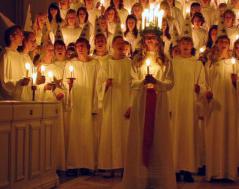
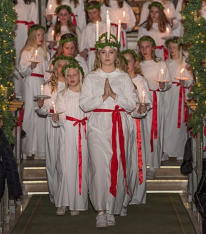







Source References
•
Wikipedia
•
Nationalencyklopedin, uppslagsverk
Top of page
